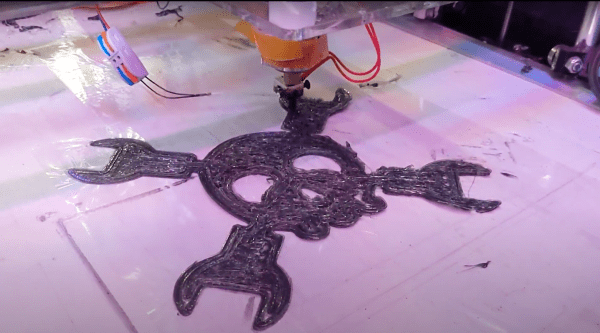There are probably almost as many DIY CNC designs as there are DIY CNCs. And there’s nothing wrong with that! We really liked [maxvfischer’s] documentation on GitHub for a machine he made based on a design by [Ivan Miranada].
In addition to a complete bill of materials, there are Fusion 360 files and very good instructions. There are several tips that seemed like they would help even if you were building similar machines.
The machine uses HTD5M belts instead of the more prevalent lead screw design. Everything slides on MGN12H slides. There are detailed photographs covering not just the tricky parts but even how to extend the stepper motor wires.
The original design used a Makita RT0700C for the spindle, but [max] couldn’t find one of those, but found a similar version with the same dimensions.
The only tip we would add is to be careful using taps in a handheld drill. (Don’t ask us how we know that.) A drill press is safer, or you can even use a tap handle and do it the old-fashioned way.
The firmware is grbl on an Arduino, and there are complete instructions for setting that up, too. We were amazed at the number of pictures included along with the detailed description. If you were ever afraid you couldn’t duplicate a CNC project, this might be the one to tackle.
There are, of course, cheaper and simpler options with fewer capabilities. Some are even almost free courtesy of the local dumpster.




















